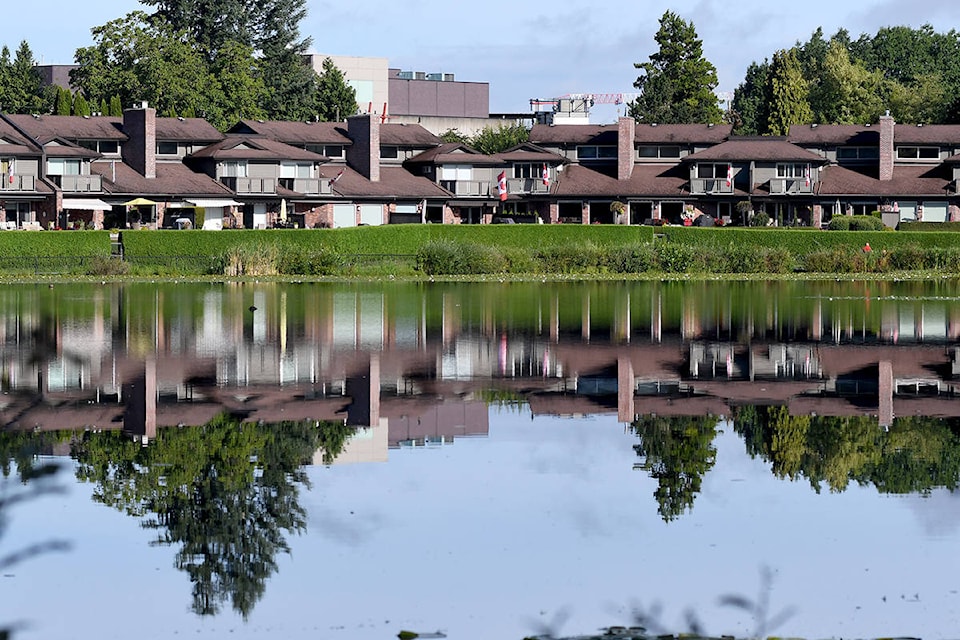Housing affordability and an aging population are two of the biggest issues facing Abbotsford in the coming years, according to the Housing Needs Report received by council on Monday (April 26).
The report was done as part of 2018 provincial legislation that requires all municipalities in B.C. to complete housing needs assessments by April 2022.
Consultant Matt Parker of HelpSeeker Technologies summarized the report for council, saying one of the biggest issues facing the community is that personal income growth is not keeping pace with the hike in housing and rental costs.
He said there was a spike in income between 2006 and 2011, but that has slowed in recent years and has only worsened during the pandemic.
“Post-2015, there has been a rapid increase in housing prices in Abbotsford, and this is a general trend in a lot of the Lower Mainland today,” he said.
The average single-family home in Abbotsford rose 79 per cent over five years, to about $811,000 in 2019, the report indicates.
Parker said this has resulted in an increase in “core housing need” – when a household spends more than 30 per cent of their income on housing.
RELATED: B.C. to give municipalities final say over rental zoning
As of 2016 – the most recent figures used in the report, based on the last census in Canada – just over 5,900 Abbotsford households, or 13 per cent, fit into this category.
Parker said almost 2,600 households fit into the category of “extreme core housing need,” in which more than 50 per cent of income is spent on housing.
The Housing Needs Report also states that Abbotsford’s homeless population grew by 21.5 per cent from 2017 to 2020, and there are four local projects currently underway to provide more beds and/or units for those impacted.
Parker said another area of concern is a growing population of those aged 65 and older.
He said the number of Abbotsford people currently fitting into that age group is 17 per cent, but that is expected to grow to 19 per cent by 2026.
He said seniors, as well as single parents, are among the “key risk groups” for whom affordable housing is crucial.
Accessible housing – for those with mobility issues – is another main concern, Parker said. He said there was a 19 per cent increase from 2006 to 2016 in households with at least one person with activity limitations.
But the type of housing they might be able to afford isn’t always suitable.
“It tends to be that older housing is not appropriate for those with activity limitations, and it tends to overly affect those in lower-income statuses because they can’t afford to make the changes necessary,” Parker said.
He said Abbotsford’s multicultural makeup is another factor that needs to be taken into account when addressing housing needs.
The report indicates that one in three local residents belongs to a visible minority, and 25 per cent of the population in Abbotsford is of South Asian descent.
Parker said this means language issues need to be considered when housing plans and needs are communicated, as does the importance of multi-generational living.
“The Western concept of a family of 2.5 kids (and) white picket fence is not true of all societies and all backgrounds,” he said.
RELATED: Housing going under the microscope in the Fraser Valley Regional District
The report projects that Abbotsford’s population will grow to 170,000 by 2026. It says this will require over the next five years another 629 single-family homes, 917 townhouses, 1,287 apartment condos and 761 market rentals.
Councillors agreed that the report will be useful in planning for the future.
“This allows us to have proactive policies in place or proactive advocacy. I think what we’re talking about here isn’t just about housing affordability; it’s lifestyle affordability,” said Ross Siemens.
Coun. Sandy Blue said the information should help the city “close the gap” in its housing issues. Mayor Henry Braun agreed.
“There’s good information in there that’s going to help us … There’s a real crisis in housing in just about every sector,” he said.
The full report will be published on the city’s website.
vhopes@abbynews.com
Like us on Facebook and follow us on Twitter
